When you buy through links on our site, we may earn an affiliate commission.
Not all hair mousses are the same; in fact, different hair mousses work better on different hair types. If you’re not sure what kind of hair mousse works best for your hair, this introductory guide can help.
You’ll know how to select and use mousse based on hair type and help you avoid making wrong choices based on scents, brand names, or other irrelevant factors.
What is Hair Mousse?
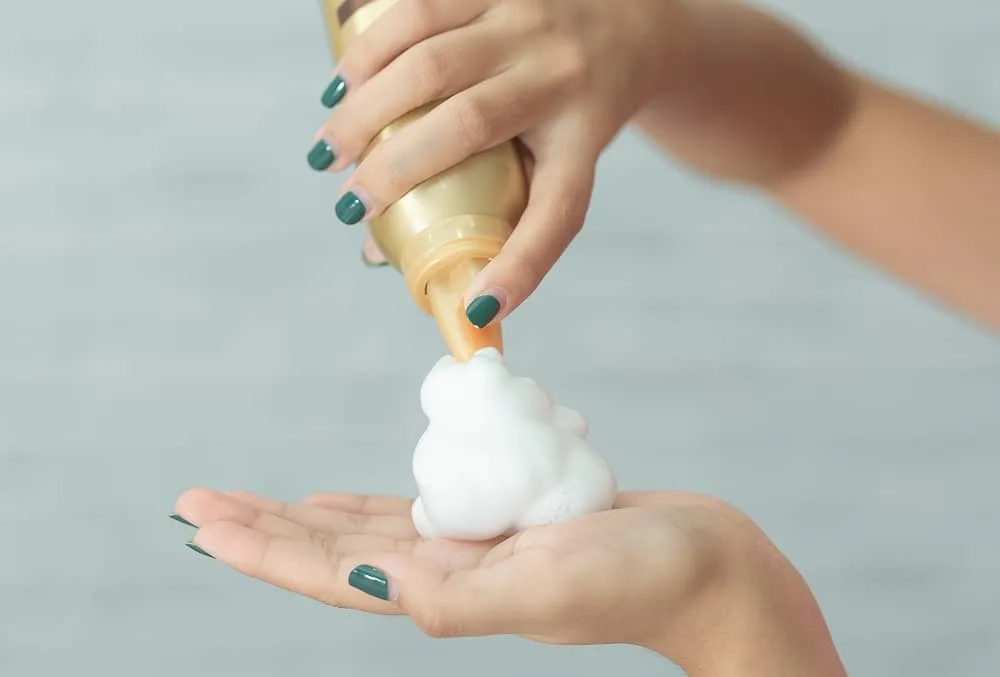
Mousse is a hairstyling product originated by L’Oreal in France and introduced to the rest of the world in the early 1980s. An aerosol container dispenses a foamy, whipped cream-like substance or a gel that turns into foam upon contact with the hands.
In fact, the word “mousse” means “foam” in French, and if you’ve ever eaten chocolate mousse, you’ll understand how it got its name. Mmmm.
Hair mousse came on the scene touted as the perfect replacement for people who didn’t like the stiff feel of a traditional hairspray. All you had to do was squirt a dollop of mousse in the palm of your hands, spread it throughout dry or damp hair, and you’d end up with shiny, soft, bouncy, and most importantly, under-control hair.
The Evolution of Mousse
The typical mousse “recipe” combines “cosmetic” polymers, such as those found in hair rinses, shampoos, conditioners, with “holding” polymers, such as those found in setting lotions and hairspray.
The combination results in a product that holds hair in place while keeping it soft to the touch. Like everything else, hair mousse has evolved over the years, and now there are hundreds of different mousse products for all types of hair.
With so many choices available, it can be challenging to figure out which products will work best for your specific hair texture.
Hair Types
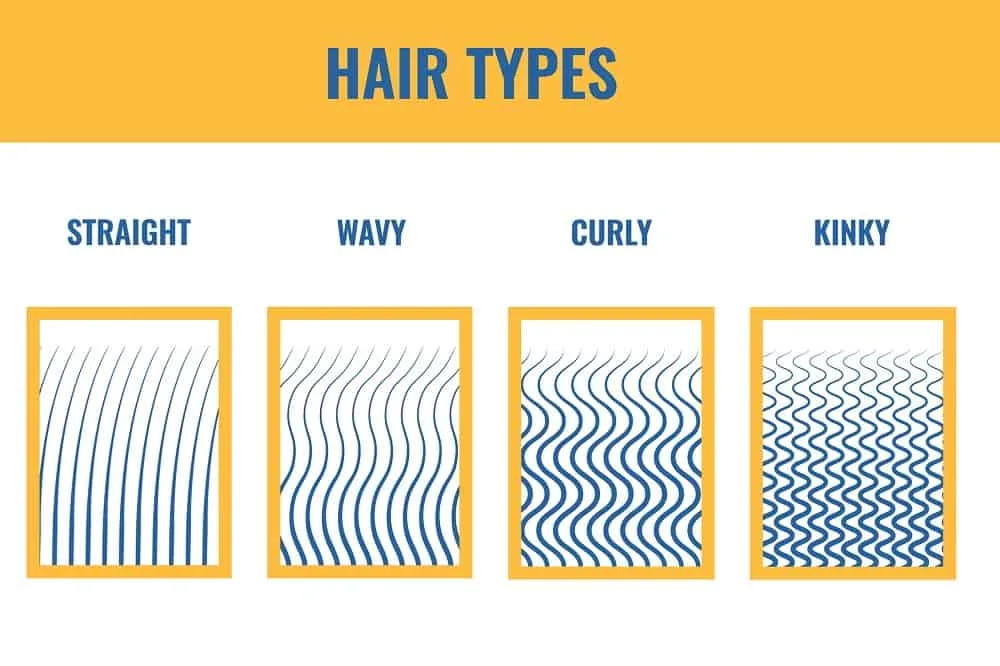
Hair types fall under four basic categories: Type 1 is straight, Type 2 is wavy, Type 3 is curly, and Type 4 is coily.
Within those four broad classifications are additional categories that more precisely describe a particular hair texture. You might have perfectly straight 1A hair, or very curly 3C hair, for example.
Related: Black Hair Types: Type 3 and Type 4 – What’s Yours?
Types of Mousse
Do you need to stop flyaways on straight, fine hair? There’s a mousse for that! Do you need to smooth out frizzies and define your curls? There’s a mousse for that!
Are you looking to add volume to flattened waves? Yes, there’s a mousse for that too! Mousse is such a versatile styling product that it can handle a variety of hair challenges.
Benefits of Hair Mousse
Using mousse in your hair has many benefits, especially compared to heavier products. Let’s break down a few of the benefits.
- Shine – Mousse contains oils that will give your hair a nice sheen.
- Volume – Ingredients in mousse cling to your hair, creating volume.
- Lightweight – Mousse won’t overload your hair with sticky products.
- Variety – There are many mousses for different styling and hair types on the market.
- Curls – Heavier-style products weigh down your curls. The mousse gives curls lift.
- Texture – Defines waves and curls, creating texture in hair.
- Hold – Mousse helps hold a style in place.
Though mousse won’t be suitable for every style, the benefits of using it make it a robust product with lots of versatility. Mousse offers a strong hold while still being lightweight. Mousse products are great for curls because they hold your curls together without weighing them down.
What Hair Mousse Won’t Do
While mousse is known for coating the hair shaft and adding a lot of lift and volume to the roots, it’s NOT known for its moisturizing properties. To combat that issue, be sure to select an alcohol-free formula to reduce its drying effect.
Mousse is also NOT an ideal choice for flat hairstyles such as pulled-tight updos or sleek, angular bobs; for those types of styles, you’re better off with a smoothing gel or hair styling cream.
How to Use Hair Mousse – Step by Step Guide
Wondering how exactly applying mousse to your hair should go? Check out our step-by-step guide to using hair mousse for all hair types.
Step 1 – Pick Your Product
Choose a mousse based on the style you’re hoping to achieve and your hair type. People with straight hair should choose something lightweight if your hair is curly, try a mousse with a stronger hold.
The type of mousse you choose will not only be influenced by your hair type but also the style you’re trying to achieve. Lightweight mousses are great for volumizing and leaving your hair shiny. Holding curls or waves will require something more substantial.
Utilize mousse to maintain braids by reducing frizz. For this, we recommend a moisturizing mousse. A moisturizing mousse is also suitable for someone with drier hair or scalp.
Step 2 – Prep Your Hair
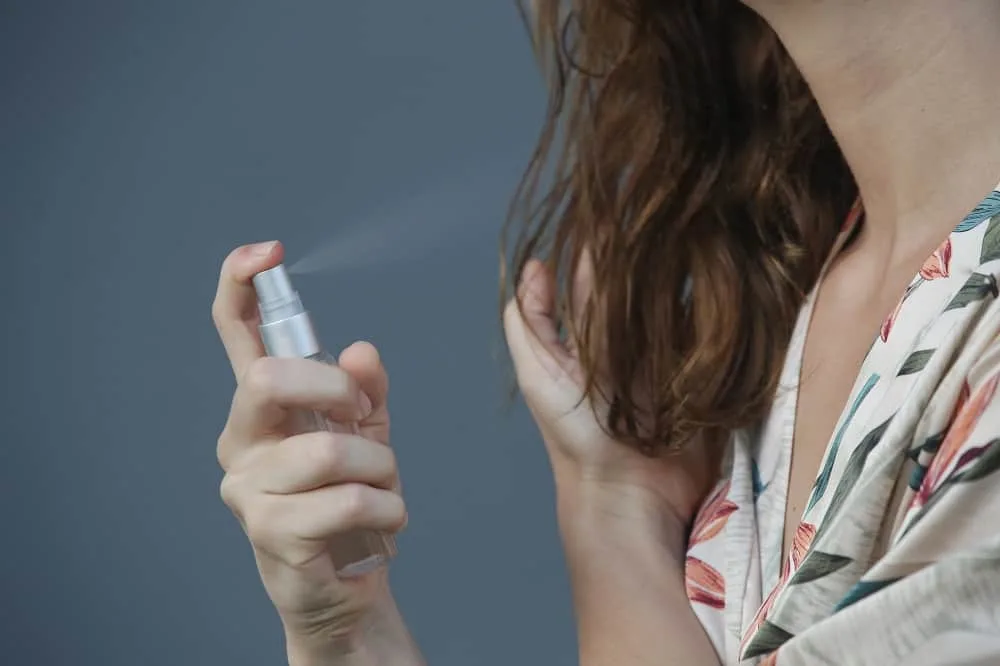
Start with a fresh wash or dampen your hair by spritzing it with some water. Your hair is more malleable when wet, so this step is essential for defining waves and curls.
Your hair doesn’t need to be soaking wet for step, so if you opted for a full wash, towel dry and wait until your hair is no longer dripping. The level of dampness should correlate to how much styling you’ll be doing.
Some styles don’t call for this step, but mousse usually works best when put in wet hair.
Step 3 – Apply Mousse
The amount of hair you have will affect how much mousse you need to use. We recommend starting small and adding more if necessary. Your hair type and style will also influence how much mousse you need.
For curls and coils, we recommend starting at the ends of your hair. Work the mousse up through your hair while scrunching and tossing your curls. Moisturizing mousse works best for this method, especially if you want to keep your curls springy, not stiff.
Start at the top of the head for straight or wavy hair, but not the roots. Work the mousse through your hair with a comb to disperse the mousse.
If you’re following a specific style tutorial, follow the directions about applying mousse particular to that style. Some looks only need mousse at the ends of your hair.
You’ll know you’ve used too much mousse in your hair if it starts to feel overly sticky. Wet hair with mousse should feel silky, not gummy. If you’ve applied too much mousse, spray some water on your hair to dilute the product.
Step 4 – Style
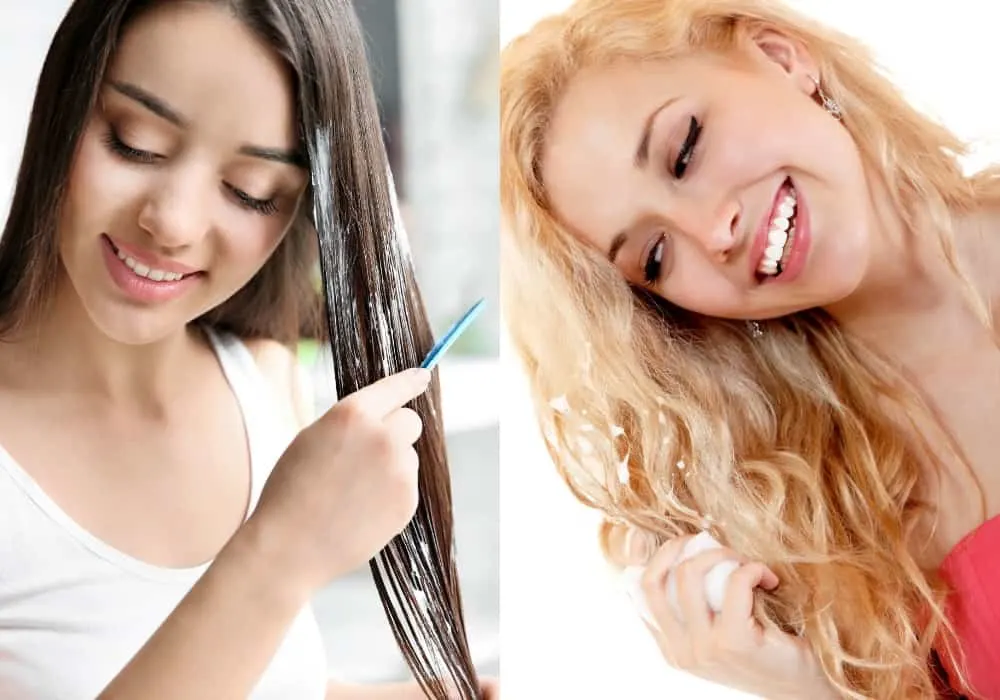
This next step is variable based on the style you’re hoping to achieve with your hair. We’ll assume you’re simply trying to enhance your hair type and not doing a specific style for this guide.
Style straight hair by continuing to brush the mousse through your hair. Flip your hair and brush from back to front to ensure even distribution of the mousse and add extra volume.
Wavy hair needs a similar treatment to straight hair. Work the mousse through in the same way as with straight hair. Try tousling your waves for a more defined look.
You can do styling curls in several ways. We recommend working the mousse through by hand to keep those curls defined. Scrunch your ringlets to ensure they’re saturated and take the right shape.
For coiled hair, we’ll follow the same steps as styling curls. Some mousses won’t be strong enough to hold coils, so look for mousses with a powerful hold and high in moisture. After styling your locks, try wrapping them up while they dry for more definition.
Step 5 – Dry
A blow-dry is the best way to get your mousse-styled hair to set. Many mousses are designed with heat styling in mind, so most mousses work best when activated with heat.
You don’t have to blow dry your hair to get the benefits from mousse. You can let your hair dry naturally overnight, giving your hair more time to hold your style. This method is a good option for drier hair since using heat can reduce moisture in your hair.
What Mousse Should You Use for Your Hair Type?
Straight, Fine Hair
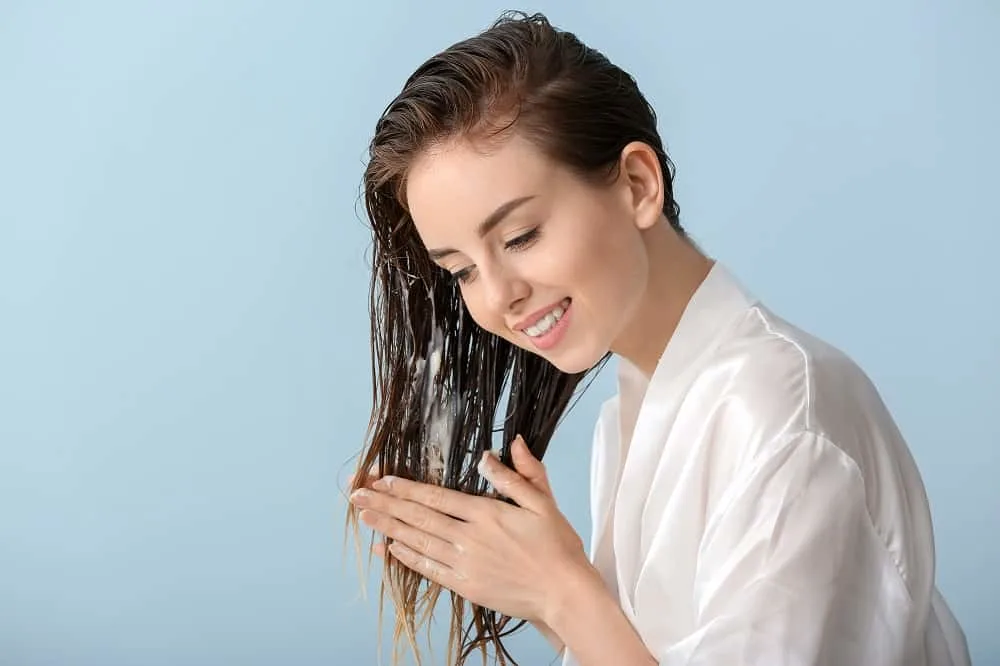
You need a volumizing mousse like Paul Mitchell Extra-Body Sculpting Foam that will provide texture and body when you blow-dry your hair. Avoid heavy mousses that weigh down your locks; instead, look for products that feature thickening qualities.
For best results, put a golf-ball-sized dollop of mousse in wet hair, but avoid applying it directly on the roots because when it dries, it can make your hair look clumpy or greasy. Comb the mousse through the strands with a wide-toothed comb to ensure even distribution, then blow-dry your hair thoroughly using a brush.
Normal Wavy Hair
If you’re a wavy-haired girl, chances are you want to enhance them to the max. A medium-hold hair mousse like BIOTERA Styling Mousse can bring out the best of your natural waves, so they’re bouncy, healthy-looking, and soft to the touch.
Make sure to apply your mousse to towel-dried, damp hair, and for extra volume and lift, flip your head upside down and scrunch your waves upwards. Hair mousse is great for creating beachy waves too!
If your wavy hair is thick and you don’t want too much additional volume, instead of scrunching your hair upwards, comb the mousse through your hair downwards. Use a wide-toothed comb to separate the waves.
It’s tempting to use a lot of mousse on your wavy hair because you believe doing so will provide better control. While that might be true, the downside is that, unlike hair creams, mousse can cause a buildup that’s hard when it dries. If you want to keep your waves soft and pliable, go easy when applying the product.
Curly Hair
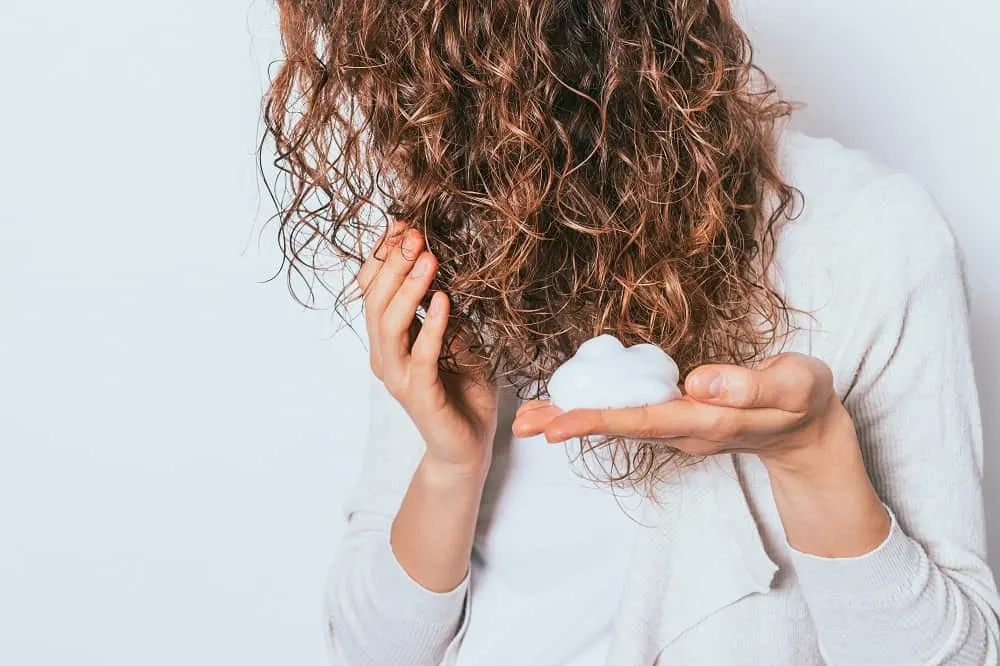
If you have curls that tend to get frizzy as the day wears on, an extra control mousse can keep your ringlets in check. Also, choose a hydrating mousse specially formulated to fight against humidity, but one that won’t harden your curls when it dries.
Ideally, air-dried or pineappled curls look even better when styled with hair mousse, but when you don’t have time to wait, using a diffuser with mousse also does the trick.
Coily Hair
If you have coily hair, you’re probably interested in hair styling products that can help you define curly ringlets. Mousse can work, but you have to take the time to twist and roll small sections of your hair into individual curls.
Mousse won’t be strong enough to lock in loop-de-loop curls, but it can help to smooth out frizz and reduce a wiry appearance.
Also, when choosing mousse for kinky, coily hair, make sure to select moisture-rich hair products that condition the hair while taming it.
Hair Mousse vs. Gel
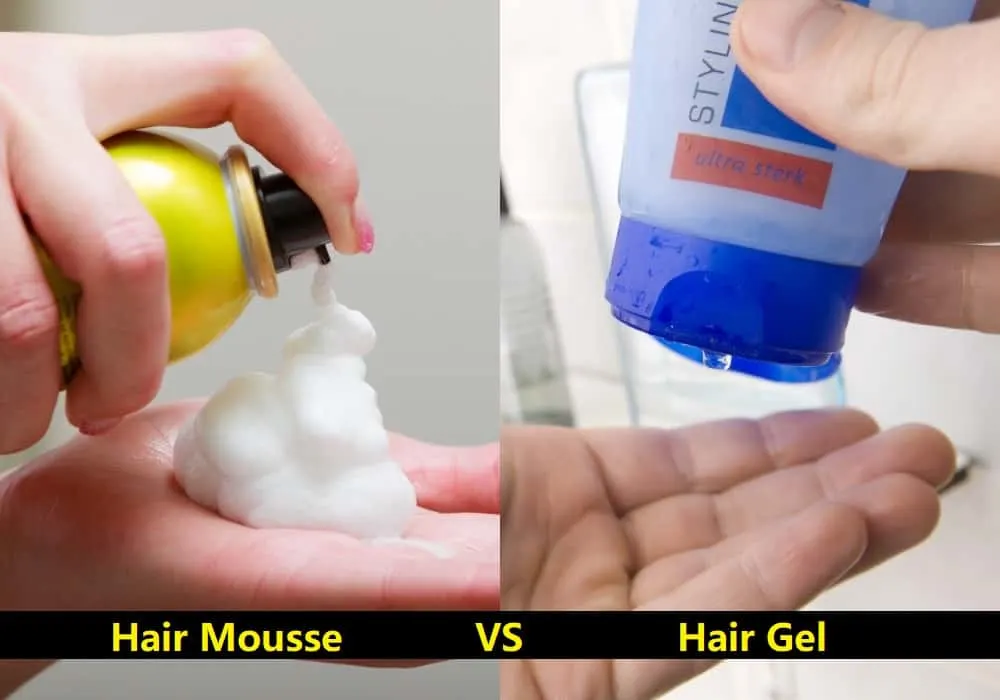
Gel and mousse are two hair products that do a similar thing: hold your hair in place. But are mousse and gel interchangeable? In short, no, they are not.
A gel is a usually clear substance used to hold the hair in place. A gel is generally stronger than mousse and better at keeping hair in place. For example, styling a mohawk would be easier with gel than mousse.
The downside to most gels is that they can become stiff and make your hair appear brittle. Your gel may flake depending on the formula, which isn’t an appealing look.
Mousse is more lightweight than gel, making it a better choice for certain styles. Mousse holds frizzy hair better than gel and works better with layered hair. Volumized hair is easier to achieve with mousse because it is so lightweight.
Mousse is a great product to use in tandem with curls. Apply mousse to your hair before utilizing hot rollers or foam rollers for extra hold.
The downside of mousse is that it is not suitable for holding together all hairstyles. Its lightweight nature is great for volume but not so much for when you need more control over your style. Shorter hair is also harder to treat with mousse, so a gel is a good option in these cases.
If your hair doesn’t respond well to mousse, try using a gel or hair cream for that extra hold.
FAQs
Here are some of the most frequently asked questions (and answers) about adding mousse to your styling routine.
The main components of most mousses are alcohol and water. These are combined with other ingredients like oils and polymers to make your hair look shiny and volumized—many ingredients in mousse act as smoothing agents to stop frizz.
The foaminess of mousses comes from the way it’s dispensed in an aerosol container. The extra air creates the lightweight foam quality of mousse.
Individual mousses will have different formulas. Find the one that works the best for your hair. If your hair is fine, check out some of these recommendations.
Certain styles will call for adding mousse to dry hair, but mostly it’s better to apply mousse to damp hair. Doing so helps seal in the moisture.
Damp hair is also easier to style. Applying mousse to your hair when wet will also leave it looking shinier when your hair does dry.
Mousse should not cause hair loss when used properly, but all styling, especially using heat, has the potential to damage hair. Keep your hair and scalp moisturized when styling your hair to prevent problems like hair loss.
Unlike other styling products, mousse shouldn’t leave your hair feeling overly stiff. Many people use mousse in their hair overnight to style their hair.
Leaving leftover mousse from yesterday’s style in your hair probably won’t hurt it, but if it’s an alcohol-based mousse, it could dry out or scalp and hair in the long run.
Many styling mousses were designed with daily use in mind, so if you want to use mousse every day, go for it.
Most mousses are alcohol-based, so moisturize your hair frequently if you’re using mousse as a part of your daily routine. You can also switch to an alcohol-free mousse.
The right kind of mousse can be great for natural hair care. Mousse can help keep frizz down in braids, roots, and edges.
Choosing the right mousse is crucial for natural hair. Look for something alcohol-free that won’t dry out your hair and preferably adds moisture to it. If you’re using mousse on braids, look for something lightweight to prevent buildup.
Do a test spot if you’re ever anxious about how you’ll react to a new product. You can see how your hair and scalp respond before you style your hair.
We hope you’ve learned some tips on how to use mousse based on your hair type. Mousse is softer to the touch than most hairsprays, it’s not usually too expensive, and if you’re in a pinch, you can use it on dry hair too.
It also adds sheen and bounce, and lest we forget to mention, it feels like a party in your hand when it squirts out of the can!
